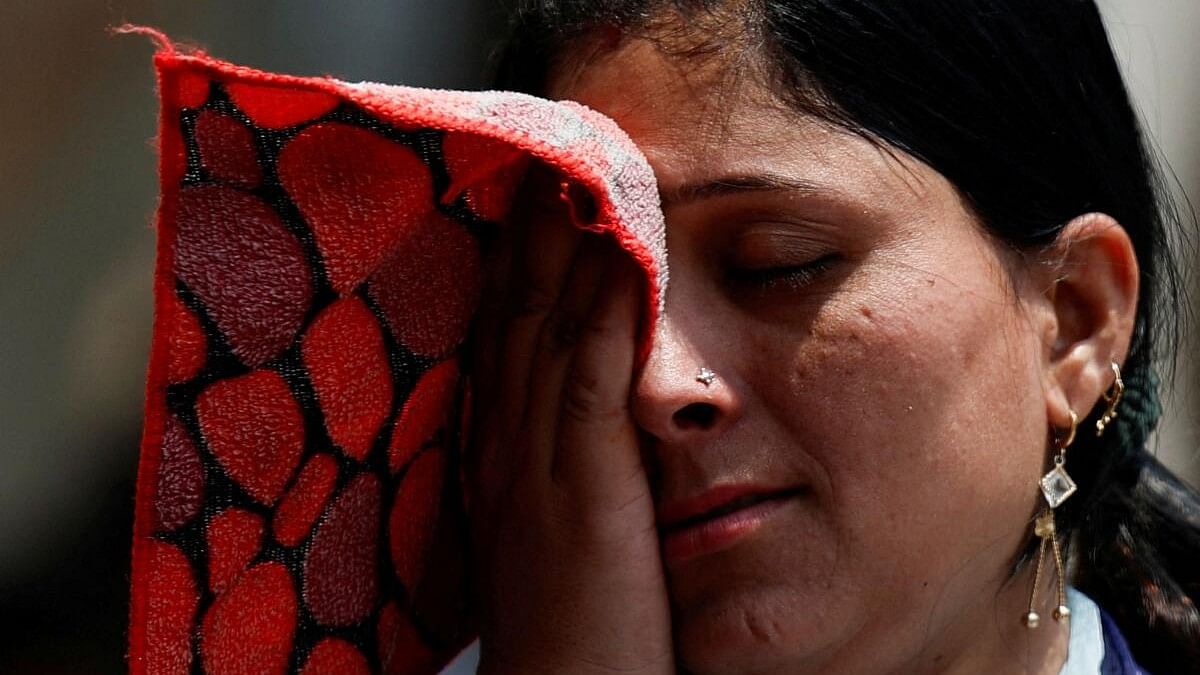
A woman wipes her face on a hot day in Mumbai
Credit: Reuters Photo
Mumbai: Amid the sweltering heat, a question is being asked whether climate change will allow India to hold another summer Lok Sabha elections in 2029.
Since this has been the warmest decade on record, with temperatures rising each year, experts weigh in if India will be able to hold another election amidst its acutely hot summer months, as impacts of climate change worsen local weather systems.
A paper by Climate Trends, a research-based consulting and capacity-building initiative that aims to bring greater focus on issues of environment, climate change and sustainable development, discusses the issue in perspective and detail.
As 49 per cent of the global population is heading to vote across 64 countries this year, how climate and local weather systems are playing an important role in the ongoing Indian elections is worth noting.
India is grappling with record-setting heatwaves where 90.7 million people are expected to vote in the world's largest democracy. Polling has been spread between April 19 and June 1.
“Data clearly indicates that there has been an increase in density, frequency, duration and area covered by the heatwave due to global warming. This means that there is no escape from the heat. All the models are predicting that heatwaves are going to increase in the future at a faster pace than what we had expected. With this, one of the challenges that arises is that rising heat stress compounds with other weather patterns. This would in turn exaggerate health impacts, forest fires and air pollution to name a few. We need to have more in depth research to counter these compound effects,” said Roxy Mathew Koll, Senior Scientist, Indian Institute of Tropical Meteorology, Pune.
The paper quotes former Chief Election Commissioner OP Rawat and Ashok Lavasa, a former Election Commissioner.
“There is a six-month window to hold Parliamentary elections. For the current tenure elections had to be held between 17 December 2023 and 16 June 2024. However, since state assembly elections were scheduled in November and December, Parliamentary elections are usually conducted after a gap of at least 2-3 months. Therefore, union elections 2024 were announced in March. To avoid such a situation in future, the election commission must call for an all-party meet where it can collectively agree on delaying the state elections by two months and hold the parliamentary elections during the 6-month window,” said Rawat.
“Now for the next general elections in 2029, the window falls between January 1 to June 30. Spring season (February and March) is the best time to hold the elections. Or else, there should be an amendment in the law that empowers the Election Commission to conduct a state assembly election a little earlier,” he added.
“Weather conditions are always taken into account to avert major disruption. There are mitigation measures which are taken well beforehand like arrangements for making people stand in queue in cool places, availability of drinking water, etc. There is a provision by which the Election Commission of India can conduct elections anytime in 180 days but they have to be extremely careful that the term of the government is not curtailed even by a day,” said Lavasa.
However, he added that another problem is that the month of February-March is exam time in schools and colleges so one cannot disrupt the academic cycle as well. “Maximum precautions are taken to minimise the extremes. However, one may consider this, if (temperatures) continue to increase,” he said.
State-run India Meteorological Department (IMD) had already predicted more than double the average heatwaves during April-June, i.e. 10 to 20 days of heat waves against a normal of 4 to 8 days to be precise.
The heat this year is expected to be worse than 2023, which has been the warmest year on record till date.
Mercury has been settling between 42-45 degrees, even soaring to 47 degrees in some parts of the country. April has seen one of the longest spells of heatwave extending up to 15 days. Parts of East and Peninsular India have been the worst hit, which are also battling humidity.